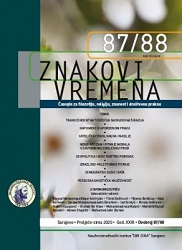Razmjere i posljedice destrukcije demografske slike Mostara, tokom agresije na Bosnu i Hercegovinu 1992–1995.
Proportions and the Aftermath of the Destruction of the Demographic Structure of Mostar during the 1992-1995 Aggression on Bosnia and Herzegovina
Author(s): Fikret BečirovićSubject(s): Social history, Studies in violence and power, Demography and human biology, Victimology, Transformation Period (1990 - 2010), Migration Studies, Identity of Collectives
Published by: Naučnoistraživački institut »Ibn Sina«
Keywords: aggression; homogenous demographic; ethnic cleansing; forced migration; prison-camps; demographic losses;
Summary/Abstract: In this paper we will present one part of the research project in relation to the demographic losses of the municipality of Mostar in the 1992-1995 period. When it comes to the demographic losses of Mostar, as well as other areas of Bosnia and Herzegovina, it must be stressed that the principal aim of the aggression on the Bosnia and Herzegovina was the destruction of the existing heterogeneous demographic structure and the creation of the homogeneous one. That aim was shared by both the Serbian and the Croatian side, as was demonstrated by their actions. Due to that, war destructions, crimes and ethnic cleansing could not be avoided as well as great human casualties, especially those of Bosniak people. Bosniaks were killed in virtually all forms of war destruction, by terrorizing, imprisoning, ethnic cleansing, raping, plundering, mass killings, as well as other war crime activities directed towards full or partial extermination. Besides evident executions, the same effect of mortality was supported by impossible living conditions in the permanent state of anxiety, lack of food, medicine, hygiene and other vital necessities, which was highly reflected in the mortality rate, in comparison to other forms. The most brutal crimes, especially committed against civilians, persecutions and forced relocations (deportations), were the last stage of the ethnic cleansing, which caused great migrations of more than 20.000 refugees, mostly Bosniaks. This was mostly frequent during the hard prison-camp tortures in Mostar and surrounding places of the western Herzegovina. Brutal tortures resulted in a number of miscarriages, sterilities, morbidities, and deep psychological traumas, which have significantly affected the decrease in the population’s natural growth, and which have evidently increased the overall demographic losses, especially of those died of natural causes, which was directly influenced by inhumane conditions.
Journal: Znakovi vremena - Časopis za filozofiju, religiju, znanost i društvenu praksu
- Issue Year: XXIII/2020
- Issue No: 87/88
- Page Range: 213-228
- Page Count: 16
- Language: Bosnian

